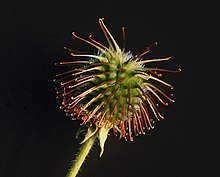Bionics - Simple English Wikipedia, the free encyclopedia

Bionics (also known as biomimetics) is the science about studying nature to create modern technology with biological method.
History
[change | change source]The name "biomimetics" was coined by Otto Schmitt in the 1950s. The term "bionics" was coined by Jack E. Steele in August 1958. He was then working at the Aeronautics Division House at Wright-Patterson Air Force Base in Dayton, Ohio.[1] However, terms like biomimicry or biomimetics are more preferred in the technology world in efforts to avoid confusion between the medical term "bionics." Coincidentally, Martin Caidin used the word for his 1972 novel Cyborg, which inspired the series The Six Million Dollar Man. Caidin was a long-time aviation industry writer before turning to fiction full-time.
Methods
[change | change source]
The study of bionics often emphasizes implementing a function found in nature rather than imitating biological structures. For example, in computer science, cybernetics tries to model the feedback and control mechanisms that are inherent in intelligent behavior, while artificial intelligence tries to model the intelligent function.
Related pages
[change | change source]References
[change | change source]- ↑ Roth, R. R. (1983). "The Foundation of Bionics". Perspectives in Biology and Medicine. 26 (2): 229–242. doi:10.1353/pbm.1983.0005. ISSN 1529-8795. PMID 6341959. S2CID 39473215.
Other websites
[change | change source]![]() Media related to Bionics at Wikimedia Commons
Media related to Bionics at Wikimedia Commons


 French
French Deutsch
Deutsch